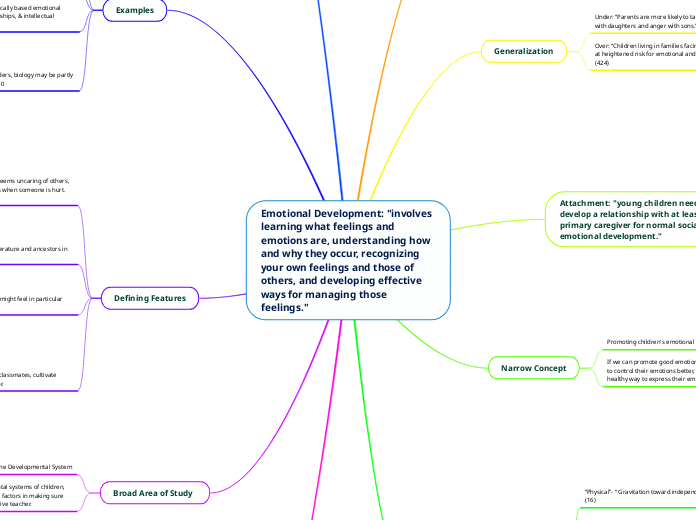Emotional Development: "involves learning what feelings and emotions are, understanding how and why they occur, recognizing your own feelings and those of others, and developing effective ways for managing those feelings."
Cross Curricular Ties
Health (Madison Pickens)
Health is important because it covers mental, emotional, and physical. Students generally have poor health so teaching them habits they can implement in their lives would be helpful.
History (Alex Landrith)
History makes me fall asleep because it doesn’t really help me in any way even though I learn a lot. I don't use it in my daily life.
Music (Dyllan Burt)
Music is a powerful tool that is used to bring out emotions. This can uplift students and make them ready to learn.
Math (Reagan Larson)
Math makes students sometimes stressed and not well. They struggle with problems and situations that they might face. I dislike math.
Writing/English (Lauryn Upshaw)
Writing makes me happy because I enjoy being able to write freely about things that bring me joy or going more in depth about things that happen in my life or stories I can make up on the spot.
Broad Area of Study
When thinking about the developmental systems of children, emotion is one of the most important factors in making sure you're being a successful, and proactive teacher.
Emotions of the Developmental System
Defining Features
When children appear indifferent to classmates, cultivate empathy and reinforce good behavior.
“For young people who are callous to other people's pain, professional intervention may include making eye contact, inferring what others are experiencing, reinforcing good behavior, and anticipating positive consequences for moral actions.” (428) This is important when helping students look outside of themselves and learn how to be selfless and help those around them.
Ask children to consider how people might feel in particular situations.
“Children can practice analyzing particular situations and considering how others involved might feel.” (426) When children are in a particular situation such as a fight, they may address the situation in a specific way.
Discuss emotions of characters in literature and ancestors in history.
“Stories can provide an opportunity to live through the characters' emotions.” (426) I think stories are important because it gives people a chance to lose themselves in the literature and escape reality, a place where they may be struggling.
Cultivate empathy With a child who seems uncaring of others, you can model appropriate reactions when someone is hurt. (425)
Empathy is the ability to understand and care for others. We need to take an interest in each other and share our feelings so people know how to talk and express themselves.
Examples
“As is true for other emotional disorders, biology may be partly to blame for conduct disorders.” p440
Non: Families don’t provide support or help to their children when they are in crisis. “ Conduct disorders are relatively common when parents provide little affection, abuse children, and are highly critical and harsh in their physical punishment.” (440)
Positive: “Young people who are struggling with anxiety and depression are often helped in counseling and other mental health treatments.” “Sensitive and consistent attention from teachers and other school staff can be a part of the situation.” (440)
“Over time, a child integrates biologically based emotional tendencies with experience, relationships, & intellectual interests.”
Positive: making sure a child is able to have situations where they can express their emotions with others and with themselves so they can learn and grow their emotions.
Non: not teaching children to express their emotions in a healthy way because they can’t learn to express them in an appropriate way.
“Even as children are strongly influenced by their first relationships, they remain amenable to new kinds of bonds.” p413
Positive: “When parents were initially harsh and insensitive but later can become affectionate and responsive, their children were likely to develop increasingly productive social skills.” (413)
Non: we assume kids can not change their knowledge and leave them to learn themselves.
“Be alert for signs that a student is contemplating suicide.” p441
Non-example: Ignoring them and assuming they’re fine.
Positive: Ask them if they have been considering suicide
Correlation Features
“Alcohol and drugs are among the most serious threats to adolescents’ health.” (171)
By addressing possible threats to our student’s health, we can help them identify triggers in the world and show them that by giving into temptation, they’ll be more hurt than helpful.
“Provide extra structure for youngsters who are highly anxious.” (440)
A child might not know how to ask for help or they might be scared to but if you assure your students that you will help them with whatever they need help with and that they can trust you then they will know they can ask you for help if they need it.
“Consider children's temperament when forming groups” (432)
If a child doesn't want to participate in class or is isolating themselves it may be signs they are uncomfortable and may need help.
“Notice children’s facial expressions and invite them to say how they feel.” (Pg 425)
A misconception might be addressing the students' feelings in front of the whole classroom. Instead, invite them to come to your office to discuss their thoughts and emotions.
Developmental Considerations
“Sense of Self”- “Be on the lookout for teens whose self-worth seems especially dependent on peers’ opinions; help them discover areas of talent that can generate a stable sense of self-worth.” (Pg 456)
There are a wide variety of emotions that students will experience every day both at school & at home, & depending on how they feel can influence their sense of self worth.
“Emotional” - “Some students deal with stress and pressure to meet certain requirements.” (Pg 434)
As students grow older, they deal with more stress and issues in their lives. Students feel that they need to obtain good grades, and good relationships with peers and parents.
“Cognitive”- “Increasing self-regulatory learning strategies” (261)
Students know what is the best way of learning for them and they implement it in their lives. Students spend their own time studying and practicing so they implement things such as making flash cards, making a quizlet, or just reading the answers and questions.
“Physical”- “ Gravitation toward independent eating habits.” (16)
Some ways we can observe the accomplishments and diversity is to help increase the interest in peer relationships, how the students see themselves and their appearance, challenges to parents and teachers over rules, and occasional moodiness and rashness.
Narrow Concept
If we can promote good emotional health and teach them how to control their emotions better, we can help them develop a healthy way to express their emotions.
Promoting children's emotional development (pg 424)
Attachment: "young children need to develop a relationship with at least one primary caregiver for normal social and emotional development."
Late adolescence
"At 14, the youngster talks with an uncle about career options." (412)
"Relationships with family members remain steady but the particular kinds of support are differentially helpful over time." (412)
Elementary age
"The various attachment figures in the child's network are apt to take on somewhat distinct roles." (412)
"At 6, the child seeks advice from his older sister about bullies on the playground." (412)
Children and infants
"When 2 parents are present in the home, infants frequently show an initial preference for one parent and soon welcome the second one as an attachment figure." (412)
Generalization
Over: “Children living in families facing economic hardships are at heightened risk for emotional and behavioral problems.” (424)
Under: “Parents are more likely to talk about fear and sadness with daughters and anger with sons.” (423)
Assessment
Post: Be presented with different scenarios and identify how the person feels/how they should react
Pre: Take a survey to identify different emotions they feel on a regular basis and identify how they react and if that’s healthy or not
I think having students be able to identify a wide variety of emotions and then the proper ways to react or respond could lead to a time of personal reflection in their own lives and they might even change how they respond to different situations in the future.









